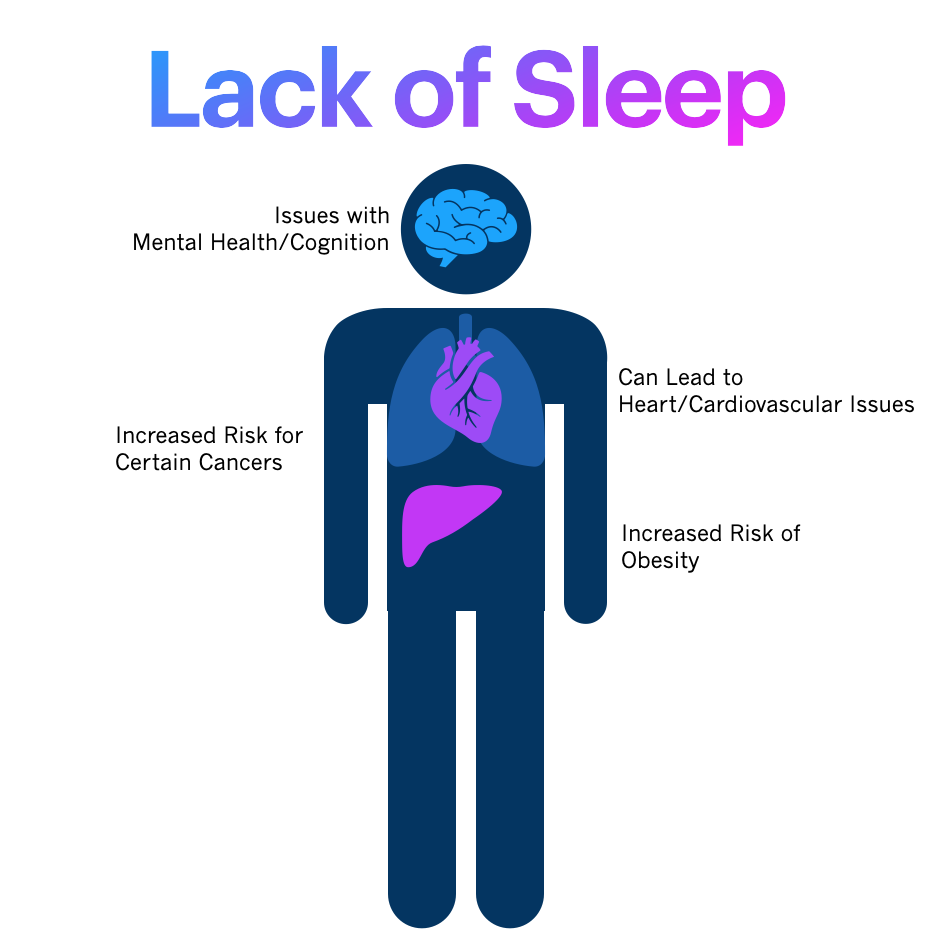Helping Patients Sleep: Pairing Patient Education with Connected Health Devices

Helping patients sleep should be a priority, yet so many patients are suffering from chronic sleep conditions or failing to get enough sleep. We know this anecdotally, but the science paints a much broader picture of the physical and mental consequences of a sleep deficit.
According to sleep experts at the National Institute of Health, “sleep affects every tissue in our bodies” which influences a wide range of bodily functions such immune regulation, hormone production, and more.
According to the US Department of Health and Human services, 67.5 percent of adults aged 18 years and over are not getting enough sleep. The CDC reports that inadequate sleep can lead to life threatening conditions such as heart disease, asthma, depression, and obesity to name a few.

Lack of sleep also negatively impacts mental health and cognition. Those who suffer from sleep deprivation are at risk for mental conditions such as anxiety, depression and will have trouble focusing and recalling information. Needless to say it’s not ideal for anyone looking to have a successful day at work, school or in general.

Given that sleep is vital to health, it’s important that patients receive guidance from you as their healthcare provider. This can be done both through adequate patient education and with the help of connected health devices.
Sleep Hygiene Education
Sleep hygiene is a practice of creating the optimal environment for sleep. This involves altering or limiting a myriad of factors including…

Sleep hygiene is something that needs to be considered throughout the day, not just before bed. Following the elements above, here are some of the ways that patients can optimize their sleep hygiene…
Setting a Bedtime
Doing so well in advance will allow patients to budget time throughout the day to wind down in the evening. So often it’s easy to get caught up exercising, binging a favorite TV show or eating late into the evening. However, if a bedtime is set patients can calculate how much time they have to engage in pre-bed activities to avoid staying up too late.
Reducing Light
A darkened room tells our bodies that it’s time to go to sleep. By contrast, scrolling through bright, loud videos on a smart phone before bed is going to signal to our brains and body that we should stay awake. Turning off electronics, ceiling lights and other bright light sources before bed helps to prepare for sleep. By getting ready for bed with the help of soft light sources such as table lamps or nights lights, patients can greatly improve sleep hygiene.
Avoiding Coffee, Alcohol and Other Substances Before Bed
The occasional glass of wine or cup of coffee isn’t considered unhealthy, however noting when these beverages are consumed and to what quantity is key. Too much caffeine during the day can have effects well into the evening. In fact, caffeine’s half life is 5 hours, which means that it can take up to 10 hours for caffeine to leave the bloodstream. So for anyone that drinks coffee before bed, this is a recipe for lack of sleep.
When it comes to consuming alcohol, it actually disrupts a normal REM (rapid eye movement) sleep cycle. While it can lead to falling asleep quickly, alcohol prevents the consumer from getting quality sleep because it doesn’t allow them to enter into the REM phase, or the most restorative/important phase of sleep.
Therefore, for individuals who are struggling to sleep avoiding these substances altogether may be the best option until they can return to their healthier habits.
Lowering the Temperature
The ideal temperature for sleep is 60 to 67° F. While that’s probably colder than most people keep their homes, it goes to show that it may be one of the reasons for trouble sleeping. Patients can lower their thermostat or purchase products such as cooling mattress pads for sleep.
30 Day Sleep Hygiene Program
Teaching patients these tips/tricks could mean the beginning to a better night’s sleep. If you’re in need of a patient education program that includes these tips and more, try BodySite’s 30 Day Sleep Hygiene Plan.
This plan walks patients through how to sleep better at night with helpful tasks, resources and daily education. The best part? It’s fully customizable and prescribed by you, giving you the ability to interact with your patients and track their progress within each of your HIPAA compliant portals.
Connected Health Devices
Pairing sleep hygiene education with connected health devices for sleep will allow patients to exhibit improved outcomes backed by their own biometric data.
BodySite allows patients to simultaneously learn how to improve sleep and sync their connected device data inside their portal where, you as their provider can view their progress.
Data such as heartbeat, body temperature, movement and time spent in REM sleep can be transmitted to these devices to measure success. Once synced all of this data appears automatically inside the BodySite platform for both patient and provider to access.
BodySite’s 30 Day Sleep Hygiene Plan can be paired with the following connected health devices…
- Oura
- Apple Health
- Fitbit
- Withings Blood Pressure Cuff
- & more…
Click HERE to Claim your 30 Day Free Trial of the BodySite platform. Click HERE to learn more about BodySite’s 30 Day Sleep Hygiene Plan.
SOURCES:
- https://newsinhealth.nih.gov/2013/04/benefits-slumber#:~:text=“Sleep affects almost every tissue,obesity, heart disease and infections
- https://health.gov/healthypeople/objectives-and-data/browse-objectives/sleep/increase-proportion-adults-who-get-enough-sleep-sh-03
- https://health.gov/healthypeople/objectives-and-data/browse-objectives/sleep/increase-proportion-adults-who-get-enough-sleep-sh-03
- https://www.cdc.gov/sleep/data_statistics.html
- https://www.adventisthealth.org/blog/2015/october/surviving-the-time-change/
- https://www.ncbi.nlm.nih.gov/books/NBK223808/#:~:text=The mean half-life of,et al., 1989).
- https://www.sleepfoundation.org/nutrition/alcohol-and-sleep
- https://health.clevelandclinic.org/what-is-the-ideal-sleeping-temperature-for-my-bedroom/
